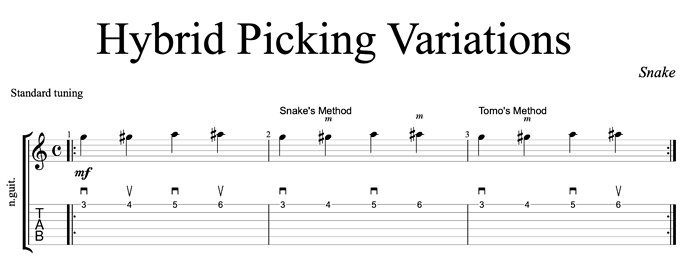Some recent discussions on string tracking motivated me to go back to this little crazy project I had for a while: playing classical tremolo with DWPS (with escaped upstrokes) using the pattern Down-pluck-down-up.
The string changes work fine, but I have some discomfort string tracking when the jumps become large (i.e. a 5-6 string range), and when the tremolo happens on the high E string, because there is no rest stroke. So I wrote my own Recuerdos ripoff etude, which only features a tremolo on the B and G strings [I will share a transcription soon]. This is very hard to do for me - a bit of a work in progress so please be nice - but constructive feedback is appreciated 
I would also like to some technical feedback from anyone who might want to try this technique. Let’s take the worst case scenario: one note on the low E, three on the high E:
---0-0-0---
-----------
-----------
-----------
-----------
-0---------
D m D U
The goal is roughly 16th notes @150-160 for these kinds of tunes, a bit faster than what I managed above. I’d be curious to know how these big jumps feel for the rest of you. Is there some way to make the 1st to 6th string jump comfortable? One thing I tried in the last couple of days (not sure if it will work) is to use the ring finger of the right hand, instead of the middle, for the wider skips. Please let me know what you come up with 
Finally this is my original thread on the technique for a few more details /context:


 )
)


 )
)